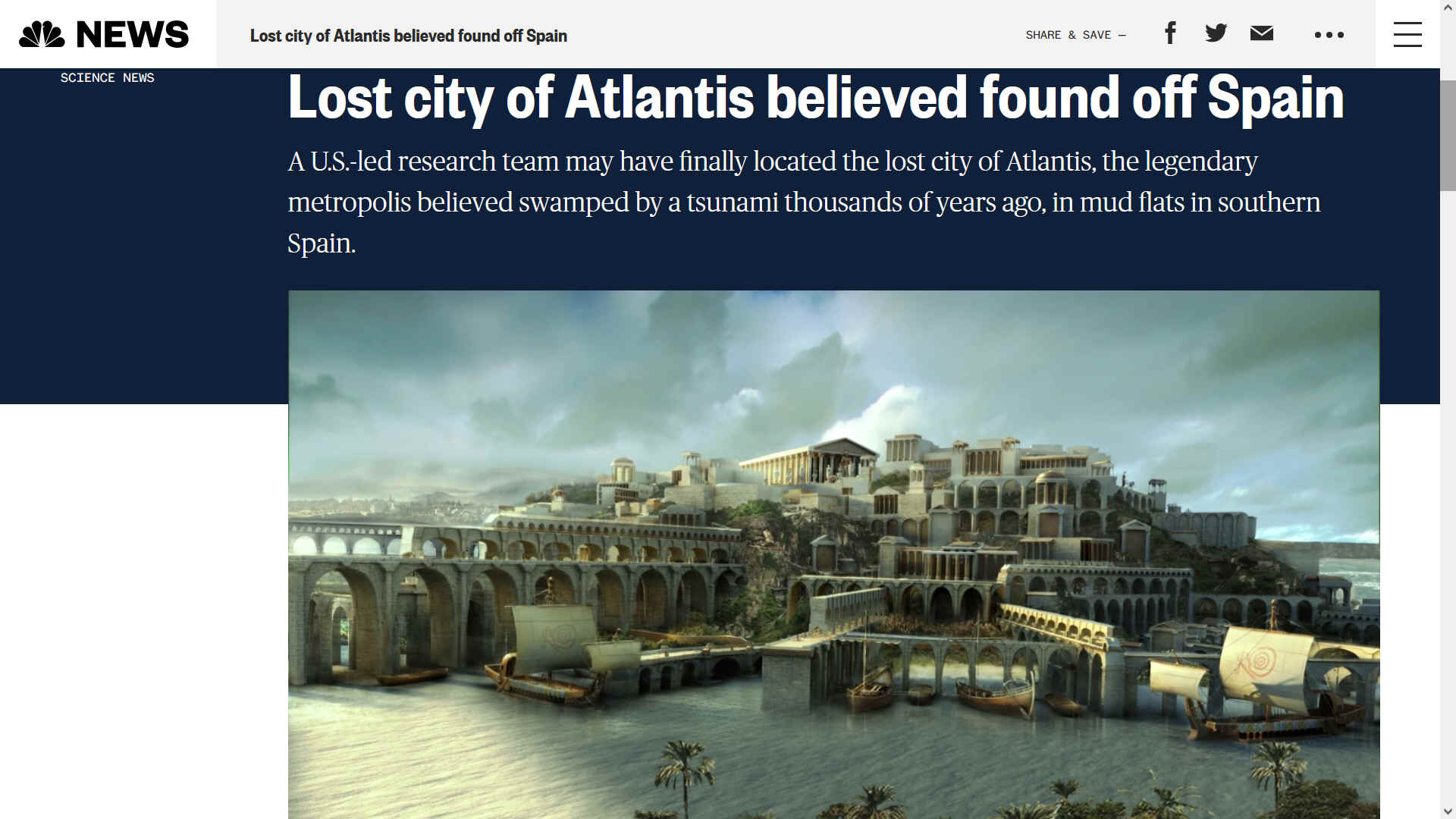|
Rungholt,
is the sunken city of the North Sea Island of Strand. This once-thriving island on the
coast vanished after an unprecedented windstorm on a grim and cold day in January 1632.
The violent event is remembered as the Grote Mandrenke (Den Store
Manddrukning), or the Second Saint Marcellus’
flood. It battered the coasts of the British Isles, the Netherlands, Denmark, and Germany.
The impact of the storm was disastrous. At least 25,000 people drowned in the storm surge, and many coastal towns and villages were lost, including Rungholt — the only settlement on the Island of Strand.
After the storm, the island was reduced to a few insignificant islets. The exact location of Rungholt was never pinned down. Divers have so far been able to retrieve artifacts believed to be linked with the Rungholt underwater ruins.
At the time Rungholt was a thriving North Sea harbor, the home of 3,000 people who relied on maritime trade and
fishing. About 5,000 homes were lost as the city disappeared in the waters.
The
archaeology can be explored by donning a wet suit and diving into Inner
Space.
Rungholt was a settlement in North Frisia, in what was then the Danish Duchy of Schleswig. The area is today located in Germany. Rungholt reportedly sank beneath the waves of the North Sea when a storm tide
hit the coast on 15 or 16 January 1362.
Sometimes referred to as the "Atlantis of the North Sea", the Rungholt of legend was a large, rich town and the catastrophe supposedly a divine punishment for the sins of its inhabitants.
The exact location of Rungholt remains unclear. It is likely that Rungholt was situated on the island of Strand, which was overwhelmed by the Burchardi Flood of 1634, and of which the islets of Pellworm and Nordstrandischmoor and the Nordstrand peninsula are the only remaining fragments.
One possible location is west of the Hallig Südfall, where in 1921 significant ruins were discovered: wells, trenches and part of a tidal lock. Another theory places Rungholt to the north of the Hallig Südfall.
Today it is widely accepted that Rungholt existed and was not just a local legend. Documents support this, although they mostly date from much later times (16th century). Archaeologists think Rungholt was an important town and port. It might have contained up to 500 houses, with about 3,000 people. Findings indicate trade in agricultural products and possibly amber. Supposed relics of the town have been found in the Wadden Sea, but shifting sediments make it hard to preserve them.
There definitely was a great storm known as the Grote Mandrenke (Store Manddrukning), and sometimes also named after the saint Marcellus, on 15 or 16 January 1362. Estimates put the number of deaths at around 25,000. Possibly 30 settlements were destroyed, and the coastline shifted east, leaving formerly inhabited land in the tidal Wadden Sea.
Impressed by the fate of the town, the relics, and not least the legends' excessive descriptions, the German poet Detlev von Liliencron wrote the 1882 poem "Trutz, Blanke Hans" about the lost town, which begins: Heut bin ich über Rungholt gefahren, die Stadt ging unter vor sechshundert Jahren. ("Today I traveled over Rungholt; the town sank 600 years ago.").
German singer Achim Reichel put Liliencron's poem to music on his 1977 album Regenballade.
German band Santiano released a song called "Rungholt" in their 2015 CD "Von Liebe, Tod und Freiheit". It also includes verses from von Liliencron's poem.
Ocean
literacy
could be taught in schools, as part of an educational
curriculum to raise awareness of just how important the subsea
kingdom is for land dwellers.
What
lost treasures might we discover as the mysteries of the deep unfold,
armed with new underwater technology and an army of freshly educated
researchers with an interest in the deep.
ATLANTIS
- MEDITERRANEAN SEA
ATLIT-YAM - ISRAEL
BAIA - ITALY
DWARKA - INDIA
PAVLOPETRI - GREECE
PHANAGORIA - BLACK SEA
PORT ROYAL - JAMAICA
RUNGHOLT
- DENMARK
THONIS-HERACLEION AND ALEXANDRIA - EGYPT
YONAGUNI JIMA - JAPAN
REFERENCE
https://www
|

